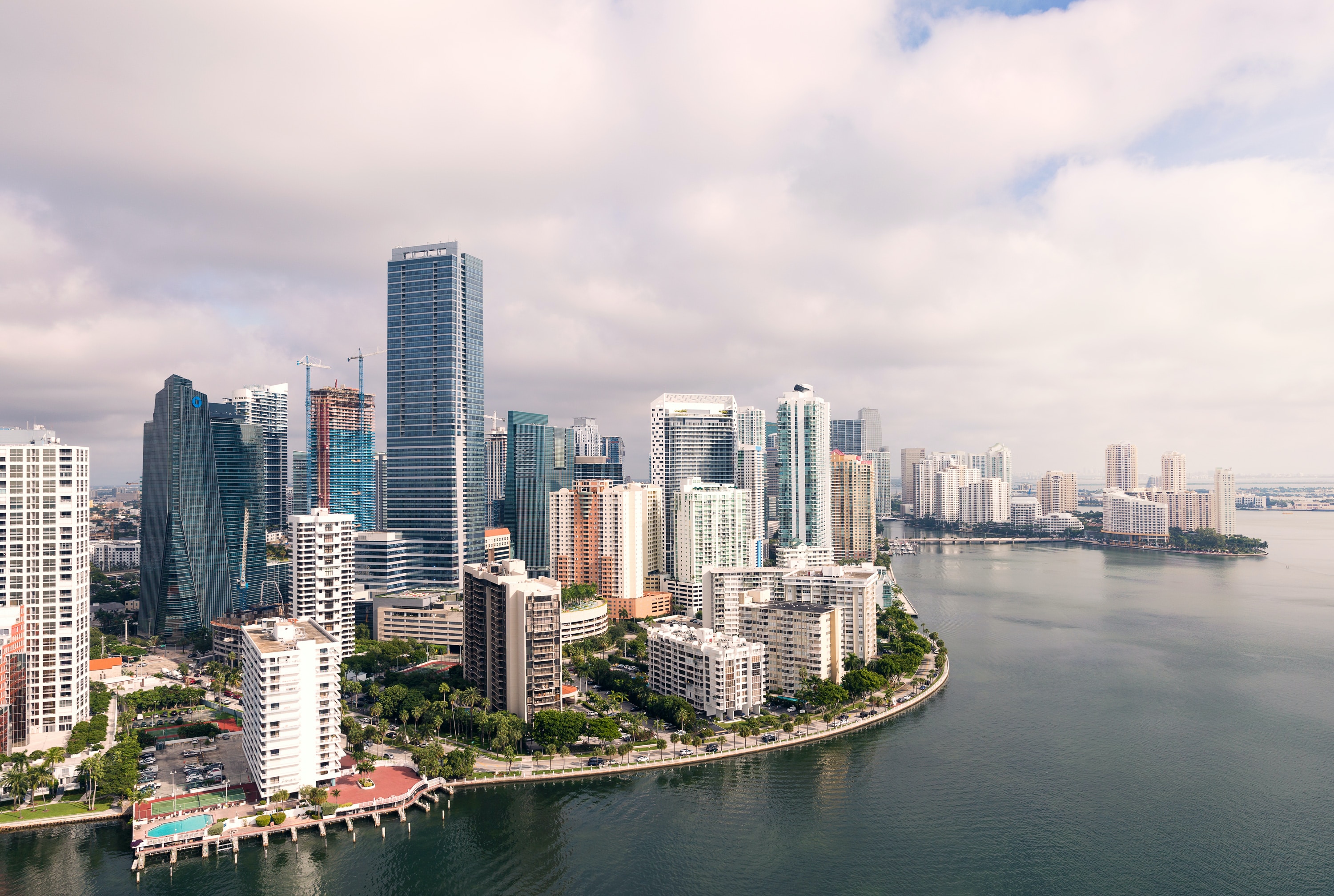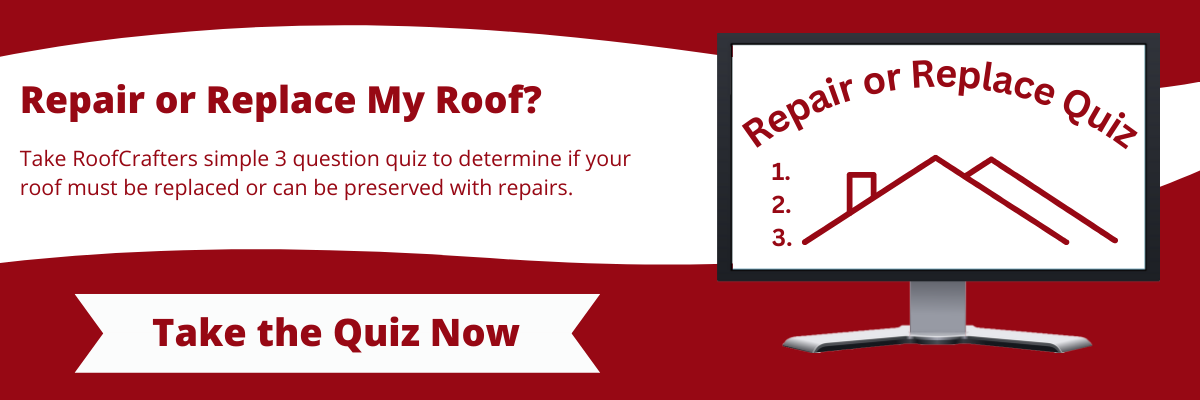
Commercial roofs are built to be durable, long-lasting, and safe. The truth is, though, that eventually, you may have to replace yours. Over time, minor issues can build up to make one huge, unavoidable one. While it may not always be collapse, other issues like leaks, mold, and rot can ravage your roof. And when the bell for roof replacement tolls, it's only natural to have a lot of questions. But wait, IS it time to replace your roof? How do you know?
We're thrilled you popped on over because we definitely resonate with your roof replacement concerns. The good thing is, though commercial buildings are different from residential ones, a lot of the tell-tale signs of failure are the same. RoofCrafters has replaced faulty roofs on commercial buildings for nearly three decades. There are numerous ways to tell if your roof is crying for help, and we're here to identify them for you!
This article is your one-stop shop for figuring out if your commercial roof has seen better days (RIP.) By the time you finish reading, you'll be a roof replacement guru (and your commercial building will thank you for it.)
Signs Your Commercial Roof is Failing
"The sky's the limit if you have a roof over your head." There's a plethora of signs that your roof is old and tired- some easily visible and some not. One of the best ways to check is by peeking over and taking a look yourself, documenting what you see, and then calling your roofer.
Roof Getting Old?
One of the most obvious signs you need a roof replacement is that it's just plain old. The average lifespan of a commercial roof ranges from 20 to 30 years, influenced by factors like proper installation, local weather patterns, and materials used. This timeframe can be a reliable benchmark for estimating your commercial roof's longevity.

Regular maintenance plays a vital role in extending its lifespan, as well-maintained roofs tend to endure the elements longer, while neglect can lead to premature deterioration. By prioritizing proper upkeep, you can maximize the life expectancy of your commercial roof and ensure your investments yield long-lasting protection.
So, if your roof is "getting up there" in age, it may be time to think about a replacement.
Pooling Water
There aren't any ducks in this pond. Is your roof "pooling" or "ponding" water?
Flat roof types are notorious for collecting water. The presence of low areas on your roof could be a sign of compressed insulation or underlying issues that require attention. Failing to address these low spots quickly will result in their deterioration over time, lessening the life of your roof.

A perfect time to identify problem areas is immediately after rainfall, as pooled water highlights the presence of "low places." If water's pooled on your roof for an extended period of time, you may need a replacement. Your roofer will determine what the best route is after closely examining your commercial roof during an inspection.
Storm Damage & Faulty Flashing
There's no mistaking storm damage because, a lot of times, it's pretty visible to the eye. Sadly, your business's roof isn't completely storm-resistant. It can take a blow from hail, snow, sleet, wind, and much more.

Common signs of storm damage include:
- Hail Dents and Punctures
- Cracking
- Missing Roof Components
- Leaking
- Discoloration
- Ice Damming
Storm damage isn't the only issue that can be visible on your commercial roof, unfortunately. Another problem commonly seen on rooftops is damaged flashing.
Flashing plays a crucial role in redirecting water away from critical sites where the roof meets vertical surfaces like chimneys, dormers, and skylights. Together with pitch pans, flashing acts as the initial barrier to prevent water from flowing into your building. By effectively sealing these vulnerable areas, flashing provides a vital first line of defense against potential water damage and ensures the integrity of your building.
Blistering or Cracking
Roof blistering, often referred to as bubbling, is a prevalent issue that affects various types of membrane roofs, including built-up roofing, TPO, PVC, and EPDM.
The formation of a bubble beneath the membrane occurs when there is a leak between the layers, often attributed to moisture or wind infiltration. However, poor installation practices or ventilation issues can also contribute to this problem. It's essential to consider that regions with significant seasonal temperature fluctuations, like Minnesota with its extremes of frigid winters and hot summers, are more prone to encountering these issues.
Prevention is Key
One of the most helpful things you can do to preserve the life of your roof is to have regular upkeep performed. Keeping an eye out for your commercial roof will help you spot problems early on, so you don't have to pay a hefty price later.

Finding a trustworthy roofer is just as vital, as well. A sketchy roofer not only may miss key points of damage on your roof, but they could also incorrectly install your new one. Improper roof installation sets your home up for early failure, more prevalent issues, and the possibility of having to get another new roof way sooner than you should have to. To learn more about roof maintenance, check out "The Surprising Truth About Roof Maintenance: What Every Homeowner Should Know."
Am I Ready for A Commercial Roof Replacement?
Knowing what you do now, what do you think- is it time? Remember- a well-maintained and structurally sound roof is essential for the protection and longevity of any commercial building. Over time, roofs are subjected to various forms of wear and tear, including weather elements, aging, and structural shifts. Failure to address roofing issues promptly can lead to significant consequences such as water damage, energy inefficiency, compromised structural integrity, and potential safety hazards.
By understanding the importance of *timely* roof replacement, you can avoid costly repairs, enhance energy efficiency, ensure a safe working environment, and safeguard your valuable assets! With proper planning, regular inspections, and the assistance of qualified professionals, commercial roof replacement becomes an investment that pays off in long-term protection, peace of mind, and overall success.
If you have any questions or concerns regarding your roof, we're thrilled to assist you. When you're ready, visit our contact page to connect with one of our helpful representatives here at RoofCrafters. Your happiness is one of our highest priorities, and we can't wait to serve you!
My name is Kevin Mills, and I am the lead estimator for RoofCrafters’ Tampa division. I’m originally from Michigan, and I enjoy hunting, fishing, and spending any free time outdoors. What I’m most passionate about, though, is helping business owners and homeowners alike achieve their roofing goals, all while providing a seamless customer journey.




